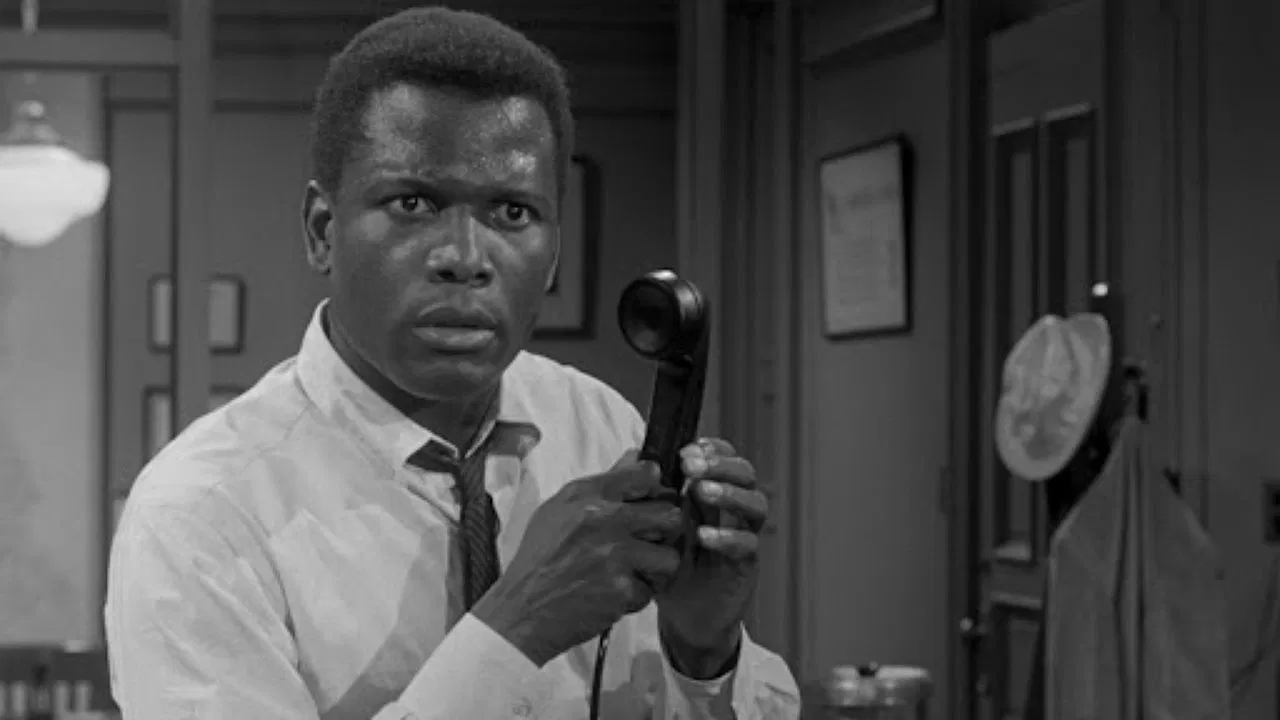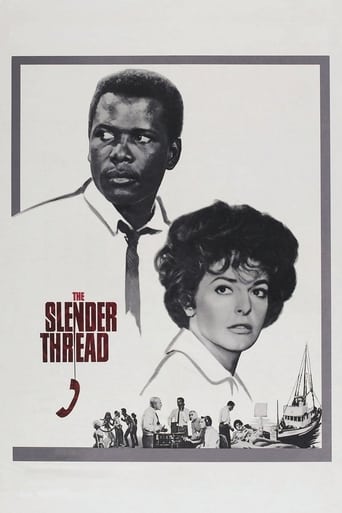

Seattle university student Alan Newell (Sidney Poitier) mans the phone at the Crisis Clinic. Inga Dyson (Anne Bancroft) calls claiming to have taken a lot of pills to commit suicide. She had a fight with her husband Mark Dyson (Steven Hill). The phone company traces the number. Dr. Joe Coburn (Telly Savalas) is the supervisor of the help phone. Det. Judd Ridley (Edward Asner) joins in the race to find Inga.This was done at the dawn of the phone help line. That may excuse the bad work done by Alan. The concept does prevent Poitier and Bancroft to have face to face interactions. That is always a disadvantage of phone acting and this one isn't intense. The tracking down of Inga provides a little bit of kinetic energy but it's not compelling. The concept is forward thinking but it doesn't always make for a good movie.
... View MoreThe movie's a one-note plot— Poitier trying to keep Bancroft on the telephone so the authorities can find her before her suicide pills take full effect. Clearly, the filmmakers have their work cut out for them. They've got 100-minutes to fill with a basically stationary plot-line. By and large, they do a decent job of interspersing the phone talk with action scenes of people trying to trace down the call; plus, flashbacks showing how the lonely, guilt-ridden Bancroft got that way. Poitier, in particular, gets to run through a gamut of emotions as his frustration builds over Bancroft's teasing determination to die. The suspense is on particular high near the end, as could be expected. But frankly, the single note plot-- pregnant though it is-- becomes a little tiresome when stretched out over the lengthy run-time. Thus, I began to feel frustrated along with Poitier, but then maybe that was the filmmakers' intent. All in all, it's a decent nail-biter whose most notable point may be the absence of any racial angle at a time when race was prominent in the headlines. Otherwise, the movie remains something of a curiosity.
... View MoreMy late father, Donald J."Bud" Donahue and my sister, Sandy Donahue ( now Bernard) were extras....since my father was part of the Seattle Chamber of Commerce,at 2nd and Columbia streets, where the office scenes were filmed, he asked that we have small walk-on parts...my father was the "coffee cart guy" and my sister was beside him at the file cabinet....I got a role that entailed walking behind the amazing Bancroft as she talked with Kay Doubleday...it was SO much easier said that done....cables, cords and wires were covering the floors....I did succeed...it was So brief. When my sister and I went to the screening at a very small "theatre", we were so amazed at how the story took shape and the importance of mental health crises programs are in real life. I think that due in a large part to my introduction to the mental health issues shown in The Slender Thread, I began my work in day therapy programs for schools and continue working with high schoolers who might be "at risk".Seattle was beautiful, as always, yet the continuity for those of us who grew up in Seattle was a bit of a stretch...trying to determine how the protagonists moved from one neighborhood to another in mere minutes.....it was fun to critique. It was laughable, yet serious.I have since viewed this "dated" movie many times and am returned to a time much simpler..where people showed much empathy and truly cared for the well-being of others...without regard to personal gain...To me THAT is the value of this timeless movie...timeless in regard to social values it demonstrates..those values Never go out of style..for this reason this movie will never be "dated" to me.
... View MoreSidney Poitier, (Alan Newell) plays the role of a college student attending a college in Seattle, Washington who went directly from his classes to a Crises Hotline Center where he serves as a volunteer. Alan expects to spend a quite evening at the center and brings along plenty of his textbooks for studying. Telly Savales, (Dr. Joe Coburn) is the boss at the Center and tells Alan Newell that he is not going to be with him this evening and has a special event to attend, so Alan is going to be on his own during the entire night. It does not take too long before a telephone call comes into his office from a drunken barber who rambles on and on and then a telephone call is called in by Ann Bancroft, (Inga Dyson) who has taken pills in order to commit suicide. As soon as Alan Newell finds out this is a real crises for emergency assistance and it is all up to Alan to use everything in his power to stop Inga from taking her life. This is a rather long drawn out film, but worth the time to view and enjoy.
... View More